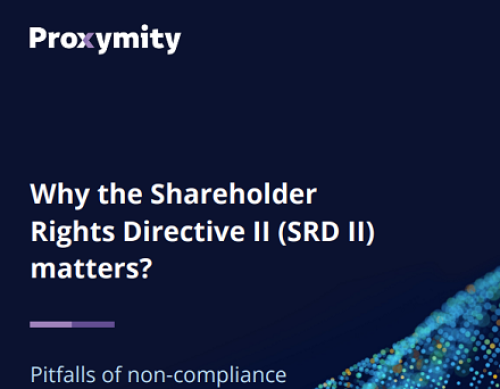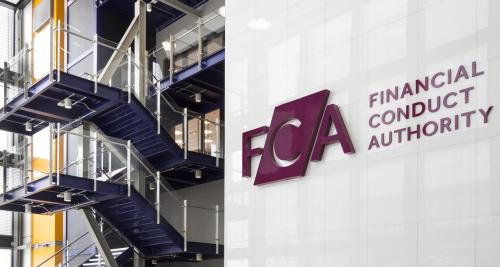The call last month from a group of investors for Lyft to cancel its dual-class shares has seemingly shifted the dial on an issue that has long been a source of debate.
A letter addressed to Lyft’s directors was penned by a powerful group of investors from the UK’s Local Authority Pension Fund Forum, French-owned BNP Paribas Asset Management, pension funds representing public employees in New York, Los Angeles, Chicago and Ohio, and US labor unions the International Brotherhood of Teamsters and the United Automobile Workers.
Lyft’s IPO went ahead on March 29 and valued the company at $24.3 bn. It includes a dual-class stock structure, with one class of shareholders getting 20 votes per share and another getting one vote per share. But while the investors failed to win the battle, their letter is just the latest salvo fired in the warring debate about the suitability of dual-class shares within companies.
The Council of Institutional Investors (CII) is in no doubt about its position on dual-class shares, having been founded in part to promote one-share, one-vote as a bedrock principle of corporate governance for publicly listed companies.
‘The notion is that equity interests should align with voting power, and that super-voting shares can lead to distortions that disadvantage other shareholders,’ Ken Bertsch, executive director at the CII, tells IR Magazine. ‘In Lyft’s case, the founders control nearly 50 percent of votes with less 5 five percent of shares.’
That said, CII’s main request is ‘quite moderate,’ notes Bertsch: ‘To sunset these structures [phasing out the extra voting rights] within a reasonable period so that we do not create long-lasting structures with limited accountability. An increasing number of companies are doing that. You can argue that in the near-term aftermath of an IPO, risk around a dual-class structure can be priced in. But we do not think that IPO markets adequately price in risk for problems 10, 20 or 30 years down the line.’
No true choice
Dayna Harris, partner at corporate governance consultancy Farient, tells IR Magazine that on face value, dual-class shares seem fine, but one has to look deep to see their true nature. ‘The general argument is that there is nothing technically wrong with dual-class shares as they are fully disclosed and the investors that buy the class with limited voting power are aware of this when they make the decision to do so,’ she explains.
‘But there is more to this under the surface. Many investors do not have a true choice with respect to buying or not buying the shares, as index funds have to reflect the indices they are mirroring and some investor strategies will require that the investors buy stocks like these. In addition, while having limited voting power may not be an issue when the company has good performance and is seemingly well run, this can break down when performance is deteriorating and/or poor, or when modern day good governance principles are not being followed.’
In the latter situation, Harris says investors have no way to express their dissatisfaction with the board’s oversight and management results – ‘which is normally accomplished through a ‘no’ vote on the say-on-pay proposal and a vote against director re-elections if problems continue and are not addressed.’
Ownership and control disconnection
Does Bertsch think, therefore, that investors wanting dual-class shares to be dropped is a good idea? His response is at first conciliatory. ‘Lyft is a great company, but the disconnect between ownership and control poses a risk,’ he says. ‘Some view the risk as unacceptable and won’t buy, and others may discount the shares. You could say that is the free market at work. But this structure will persist.’
Then he adds: ‘I would note that the Lyft structure gives the founders 20 votes per share, which is even worse than the standard 10:1 dual-class arrangement.’
Harris also says it is reasonable for Lyft investors to want the dual-class shares plan dropped. ‘After all, they have or will have contributed a significant amount of capital to the company and resulting wealth for the founders,’ she says. ‘Being publicly traded means being responsible to all shareholders, not just the founders and other pre-IPO investors who continue to have the preferential voting class of shares. This responsibility and other expectations about good governance are constantly evolving, and a publicly traded company needs to be responsive at some point.’
IR Magazine contacted Lyft for comment, but the company did not respond.
Dual-class flexibility
But Gary LaBranche, president and CEO of NIRI, expresses a different opinion to IR Magazine. ‘Companies should have the flexibility to adopt dual-class ownership structures when they go public if the founders – after consulting with the company’s pre-IPO investors – determine that such an ownership structure would give the company more flexibility to develop and carry out a long-term growth strategy,’ he says.
‘Newly public companies should be able to protect themselves from stealth attacks by activist funds that may have a shorter-term market focus. Under the SEC’s outdated 13D disclosure rules, it is not difficult for activists to use derivatives to secretly amass a significant position and then ambush a public company and force concessions that may not be in the long-term interests of other investors.’
In this way, LaBranche opposes any new regulation to prevent dual-class shares. ‘NIRI opposes regulatory efforts to bar newly public companies from adopting dual-class structures or to arbitrarily exclude these issuers from stock market indexes, as we believe these efforts could expose more companies to short-term activism and deter private companies from going public,’ he says.
And placing the relative decline in US IPOs as part of this debate, he adds: ‘Given the significant decline in the number of US public companies since the 1990s, we should be doing everything we can to encourage more companies to go public. While it appears that 2019 will be a strong year for IPOs, we should not assume this trend will continue.’
Tech and dual-class shares
On the reason why so many tech firms are embracing dual-class shares, Bertsch says: ‘Founders are in a pretty good bargaining position right now, so this is a play to maximize their control even while tapping public equity markets.
‘But I should point out that most US companies still go public with one-share, one-vote. Last year just 11 percent of IPOs used dual-class share structures, and a number of those had time-based sunsets that would end the structures in anything from three to 10 years. A good number of tech companies use one-share, one-vote, such as PagerDuty, a $1.6 bn market cap San Francisco company that recently went public.’
And this does appear to be true. Tufin Software’s $108 mn IPO last week was one-share, one-vote, while Uber’s prospectus for its upcoming IPO is also on a one-share, one-vote basis.
‘So while we are concerned, it is just not true at this point that all tech companies list with dual-class stock structures,’ says Bertsch. He does, however, concede that there has been a growing trend for them. ‘We are seeing a lot of Chinese tech companies adopt dual class,’ he adds. ‘The NYSE and Nasdaq have appealed for such listings. And the Hong Kong Stock Exchange last year finally threw in the towel on its one-share, one-vote rule.’
Investor choice
And for LaBranche, the issue simply comes down to what investors want. ‘We see the controversy over dual-class structures as a matter of investor choice,’ he says. ‘If an investor doesn’t want to invest in newly public companies with such ownership structures, it is free to choose other investment options. But if investors decide that a company’s growth prospects outweigh any concerns they may have over a dual-class structure, they should be free to make that investment decision. It is notable that the recent IPO of Lyft was significantly oversubscribed, despite going to market with a dual-class share structure.’
Bertsch, however, thinks the structure could result in some problems emerging in the future. ‘I suspect we will see some poor performance at dual-class stock companies where insiders have special voting rights and resist change – such as firing themselves – or where those insiders are lax in governing the companies,’ he says. ‘That could lead to some blow-ups.
‘Until then, a significant number of companies will go public with dual-class structures, though probably an increasing number will use time-based sunsets, either voluntarily or through a listing standard requiring it, as this strikes many people as a reasonable accommodation










